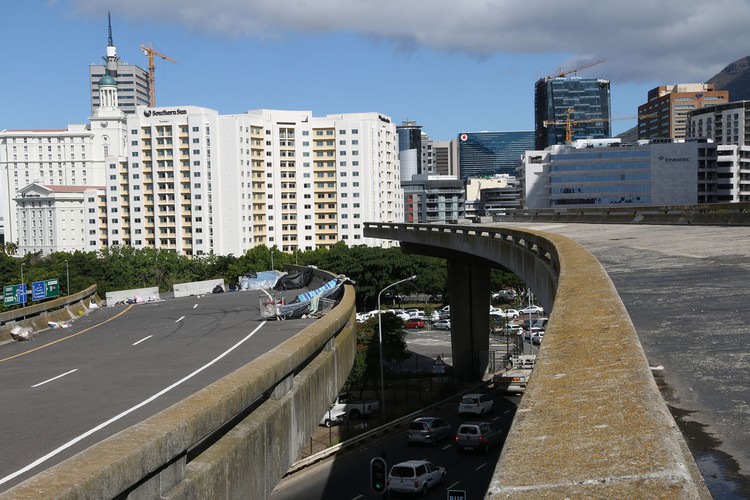
City-owned land in Cape Town city centre is to be freed up. Photo: Steve Kretzmann
31 October 2019
City-owned land along lower Buitengracht Street, which has been held by the province as road reserve for the unfinished Foreshore freeway, is in the process of being returned to the City of Cape Town’s property management portfolio.
The subcouncil 16, consisting of city bowl wards, this month approved a request to the Western Cape Provincial Government to amend the Road Scheme proclamation and release 11,225 square metres of City-owned land that has been underutilised for over 40 years.
The land between Walter Sisulu Avenue and Wale Street was to be used for the original 1970s Buitengracht Road Scheme, which would have linked the Foreshore freeway to parking garages in the city via an elevated viaduct.
But Mayco Member for Spatial Planning and Development Marian Nieuwoudt is tight-lipped on whether this means the City has plans for the unfinished Foreshore freeway, known as “Solly’s Folly” after the plan proposed by city engineer Solly Morris.
In response to questions from GroundUp, Nieuwoudt said: “The City will communicate about the future of the Foreshore Freeway once a decision has been made.”
As to what the City would do with the land – much of which is used as parking lots at present – she said no decision had yet been made.
The land forms part of sites which activist organisation Ndifuna Ukwazi has identified as potentially useable for affordable housing in the inner city.
In its publication, City Leases: Cape Town’s Failure to Redistribute Land, Ndifuna Ukwazi identifies 13,700 square metres of City-owned land along lower Buitengracht Street, which could be developed to provide between 719 and 1,079 affordable housing units in eight to 12-storey mixed-use, mixed-income buildings. The organisation did not seem to be aware that most of the land they identified was being held in check by the provincial government.
Ward councillor of the city bowl’s ward 77, Brandon Golding (DA), said it was likely nothing would happen with the land for “a few years”.
Golding said some of the properties had buildings on them, which probably pre-dated the proclamation of the road reserve, but most of the land was being used for parking lots and “a dog park”. “Somebody realised we’ll never complete those elevated freeway plans,” he said.